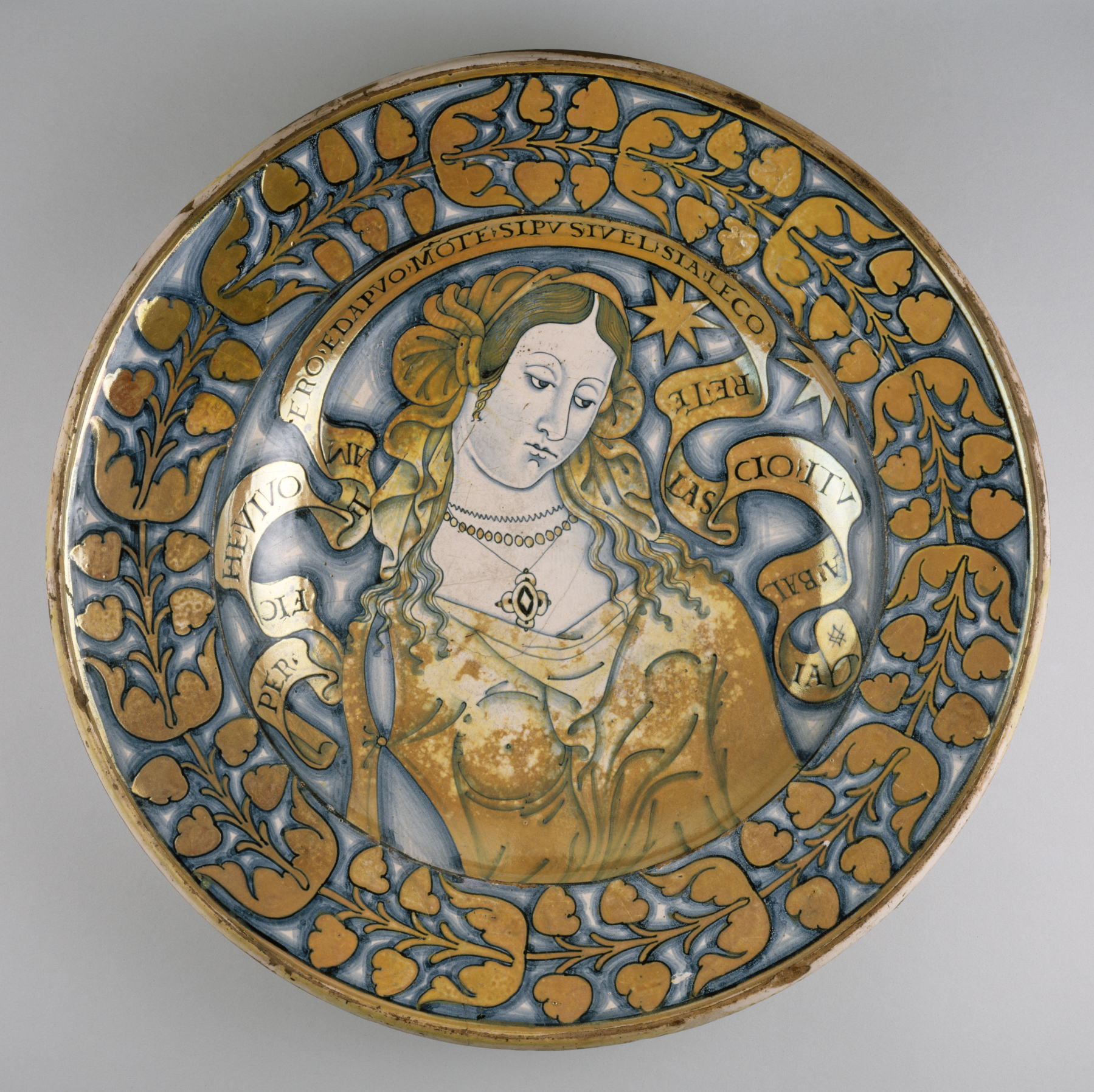Lustered dish with a female figure
(Renaissance Europe )
The decoration of this large dish is a striking example of a popular subject for maiolica, a Bella Donna or beautiful woman. It could have been intended as a stylized portrait of a real woman or as an evocation of a poet's beloved, such as Laura who was praised, admired, and desired by the famous Italian poet Petrarch (1304 -74) in his sonnets. This plate testifies to the flourishing culture of love poetry during the Italian Renaissance. The beautiful young woman with jewelry and long flowing hair as well as modestly averted eyes is surrounded by a scroll that translates: "As long as I live, I will love you, and after your death my one humble desire is to be united with you. I am left at your mercy." Such a melancholic and stylized declaration of love was characteristic of courtly society and speaks of the power of beauty to enamor the beholder, especially in a society in which the male suitor may know very little for certain about a young woman other than her appearance and her family's standing. A similar plate with the identical image of a woman in the center (Victoria and Albert Museum, London) bears an inscription that translates: "Only death extinguishes true love."
The striking combination of cobalt blue and gold-colored luster is characterisitc of Deruta. The plate's size and extensive luster decoration also suggest that it was intended to be placed on view and displayed in a prominent location, an example of the category of Piatti da Pompa, or show dishes.For other depictions of Belle Donne, or Beautiful Women, see: 48.1351; 48.1358; 48.1510; for more on maiolica, see: 48.1336; for luster decoration, see: 48.1320
Inscription
Provenance
Provenance (from the French provenir, 'to come from/forth') is the chronology of the ownership, custody, or location of a historical object. Learn more about provenance at the Walters.
Henry Walters, Baltimore [date and mode of acquisition unknown]; Walters Art Museum, 1931, by bequest.
Geographies
Italy, Deruta (Place of Origin)
Measurements
3 7/16 x 17 5/16 in. (8.7 x 44 cm)
Credit Line
Acquired by Henry Walters
Location in Museum
Accession Number
In libraries, galleries, museums, and archives, an accession number is a unique identifier assigned to each object in the collection.
In libraries, galleries, museums, and archives, an accession number is a unique identifier assigned to each object in the collection.
48.1741


